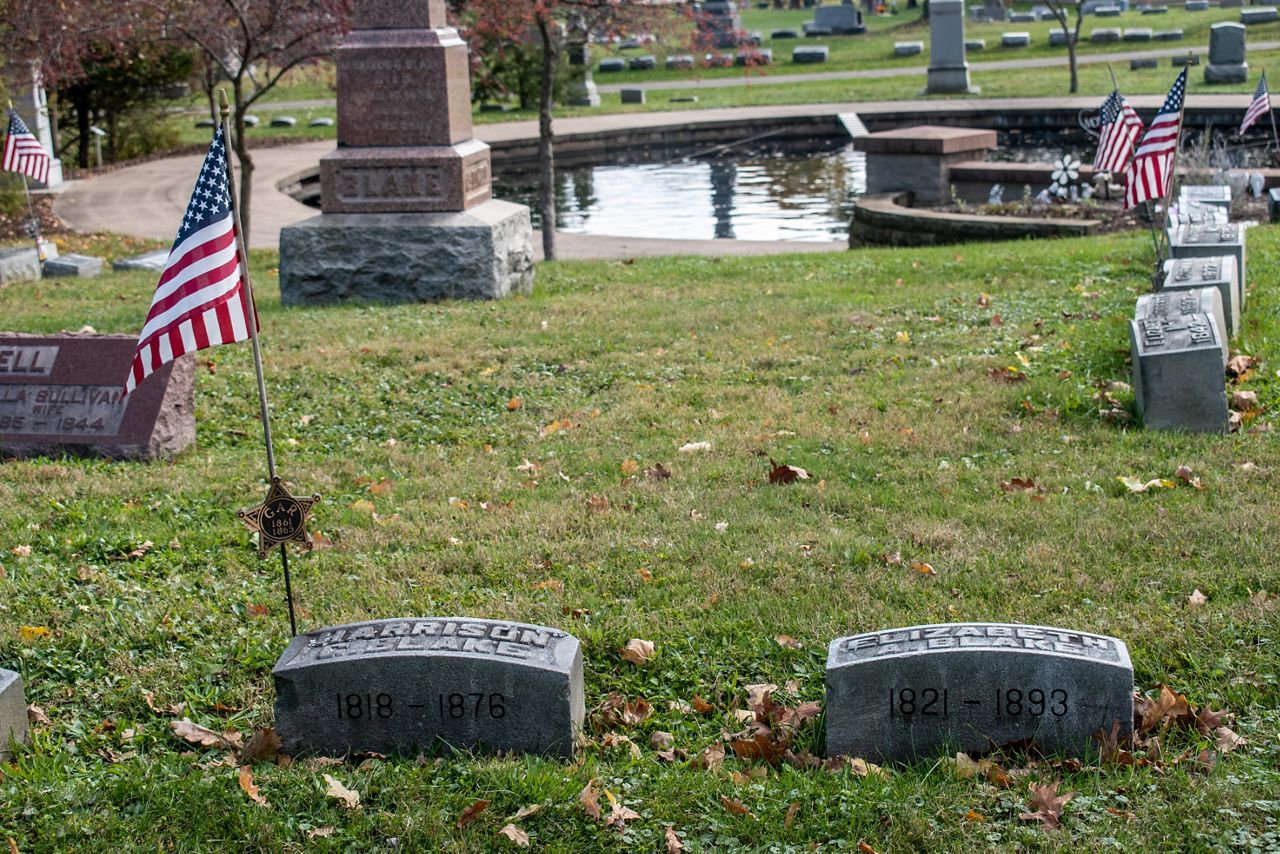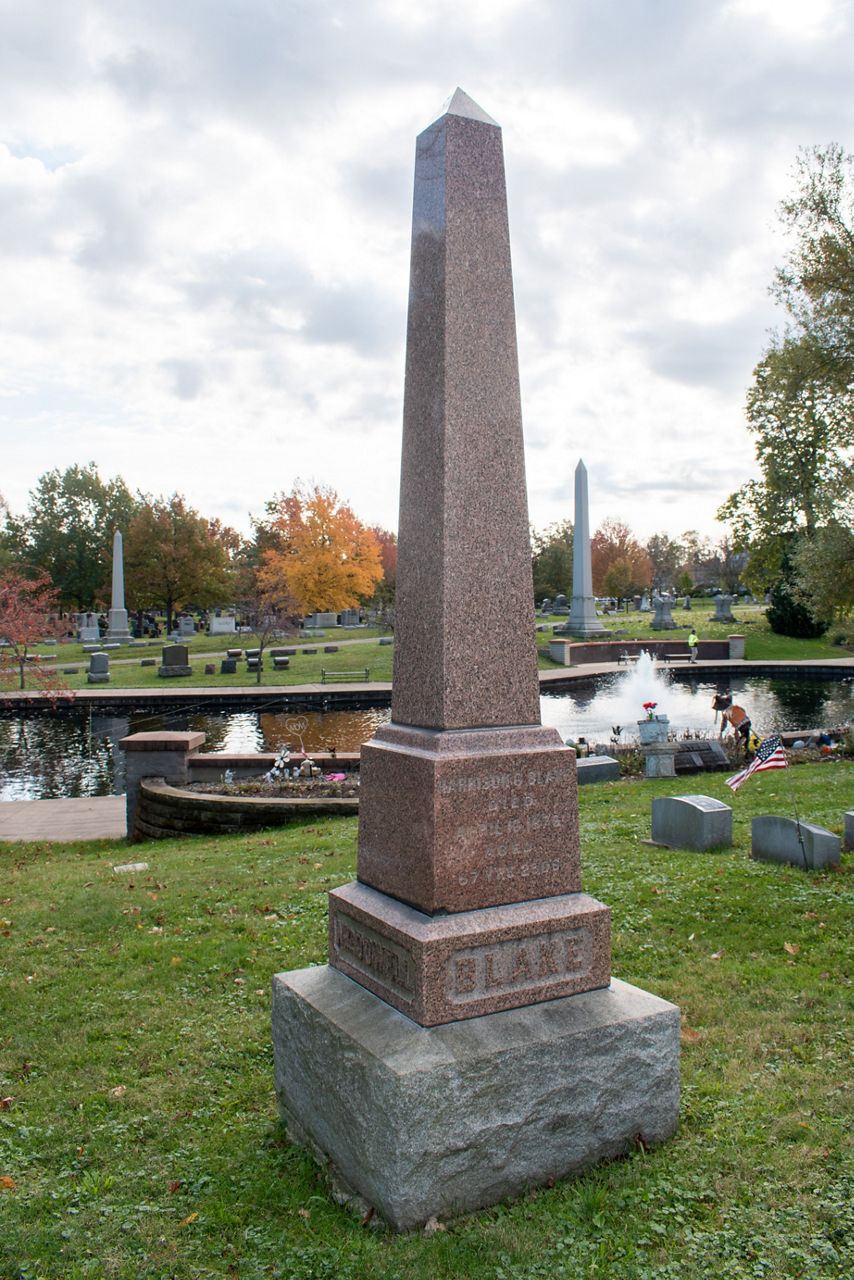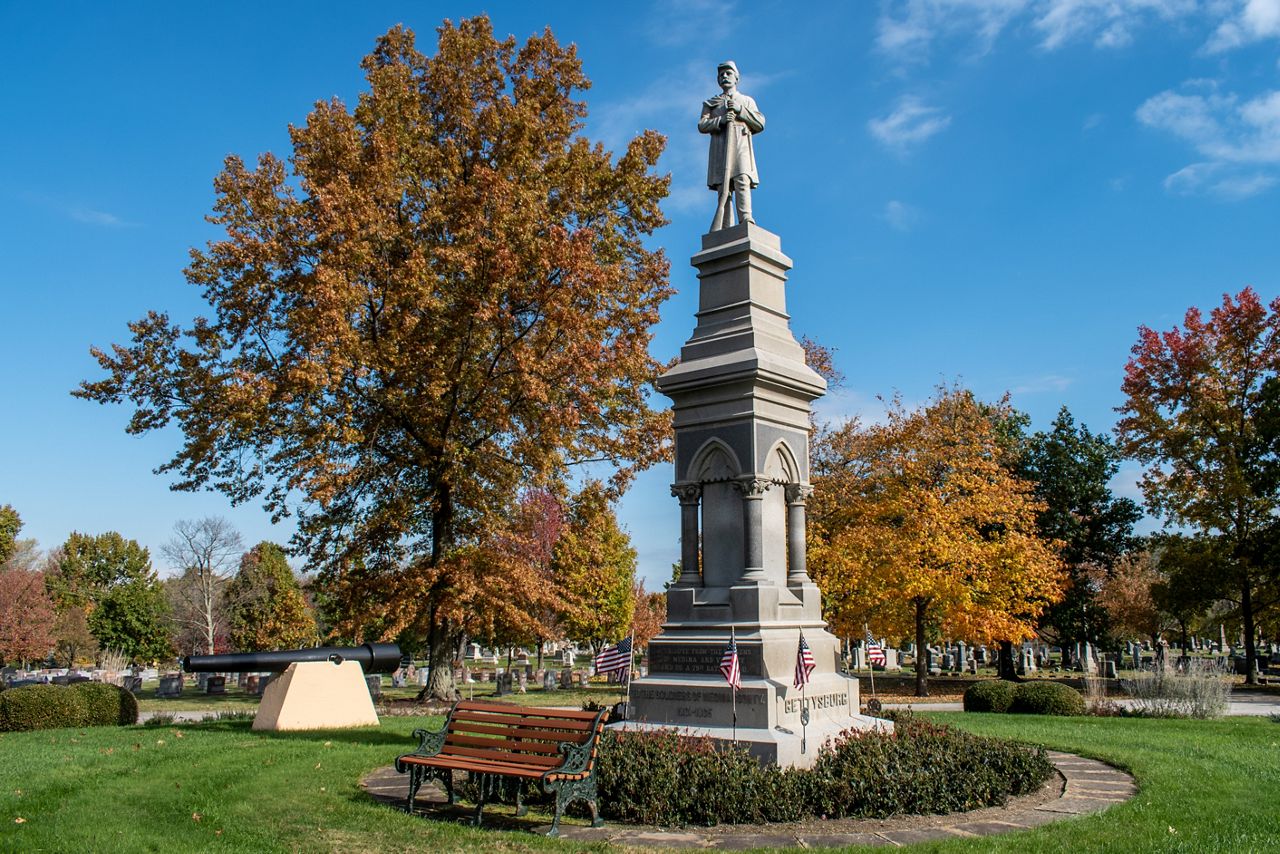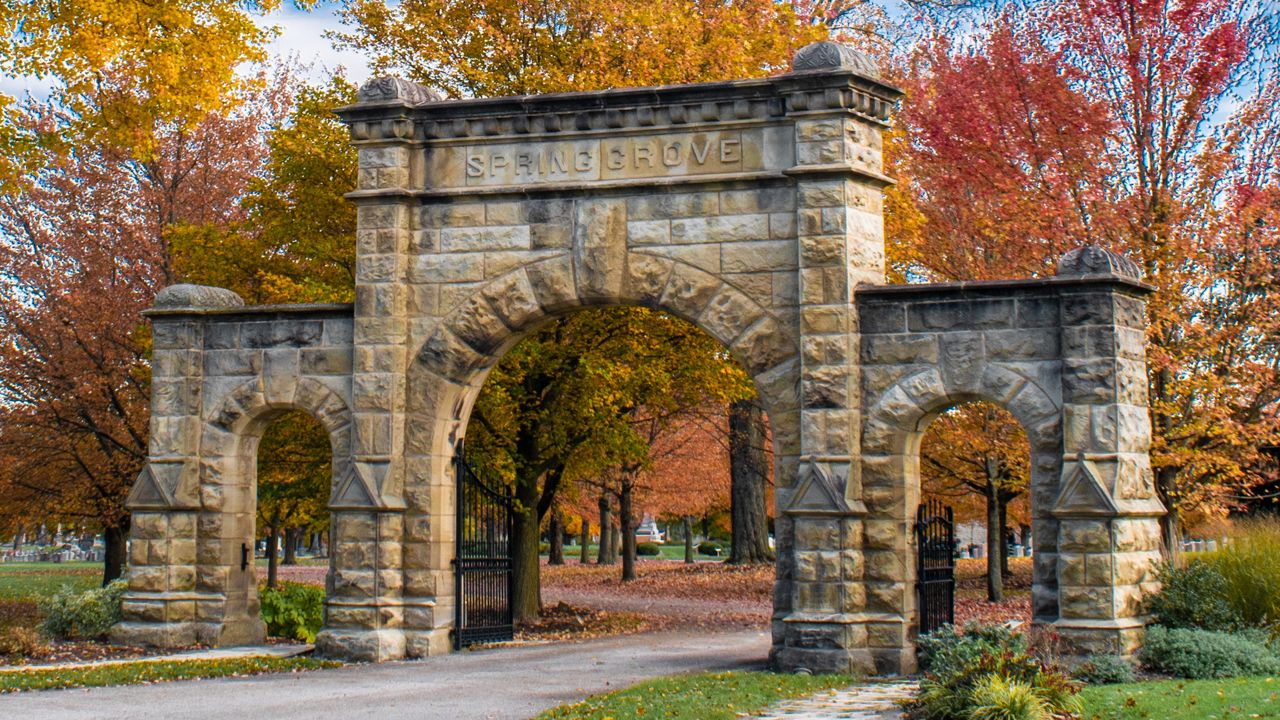MEDINA, Ohio — A recent addition to the National Underground Railroad Network to Freedom is the Spring Grove Cemetery in Medina.
Opened in 1883, Spring Grove is the final resting place for Medina residents, many who were active in the often-harrowing work of slavery resistance, protecting, harboring and moving people away from bondage and toward freedom.
The National Underground Railroad Network to Freedom program is managed by the National Park Service. The program currently lists about 700 sites, facilities and programs across the nation that “provide insight into the diverse experiences of freedom seekers who bravely escaped slavery and those who assisted them,” the park service said in the announcement.
To earn this distinction for Spring Grove, the application submitted to the NPS highlighted Harrison Gray Blake and his wife, Elizabeth Bell Blake, abolitionists whose home was a stop on the Underground Railroad, said Friends of the Cemetery Trustee Karen Thorn, who led the committee that developed the application.
Their house, still standing on the corner of East Washington and Jefferson streets, is where Elizabeth Blake cooked for and helped hide slaves known as “Freedom Seekers.”
H.G. Blake, for whom an elementary school is now named, was a lawyer elected to the Ohio House of Representatives, Ohio Senate and U.S. House of Representatives. He also served as mayor of Medina later in his life.
A skilled orator, Blake's often impassioned anti-slavery speeches to Congress are available online. In 1860, he delivered one of his most celebrated speeches, “Freedom Takes No Step Backward,” which rejected any compromise with the south that would support slavery in any form.
But one letter Blake wrote and signed in 1858 secured Spring Grove’s place on the national register for the Underground Railroad to Freedom, Thorn said. Written to Oberlin College professors James Monroe and Henry E. Peck, the letter served as a kind of ticket for those moving along the Underground Railroad.
The letter, housed at Oberlin, reads, “Prof. Monroe and Peck, Gents, here are five slaves from the House of Bondage, which I need not say to you that you will see to them—they can tell their own story. Yours &c, H.G. Blake.”

Friends of the Cemetery members believe with about 10,000 people buried at Spring Grove, there are many others buried there who were either active on the Underground Railroad, or Freedom Seekers, Thorn said. But the work to identify them must be painstaking.
“We feel that anybody who's been part of the Underground Railroad, and resides within our cemetery, should be recognized for their efforts,” Thorn said. “Not everybody still has a house standing, so you might not be able to visit the actual place, but you could still pay respects and learn about them from visiting their grave.”
To that end, Thorn is currently writing an addendum to the Friends of the Cemetery submission to add another Medina couple who participated in the Underground Railroad—Herman and Martha Canfield.
A Civil War hero, Lt. Col. Herman Canfield was a known abolitionist who served as an Ohio senator and as mayor of Medina. He was killed in action at the Battle of Shiloh in 1862.
Martha Canfield had her husband’s body brought back to Medina for burial, and then moved her two daughters and two sons south to care for sick and wounded soldiers in military hospitals, records show.

While working as a nurse, she was able to convince Union Gen. Ulysses S. Grant to have wounded and sick soldiers transported back to their home states, records show.
When the war ended, she opened the Canfield Colored Orphan Asylum at the former Charleston Hotel in Memphis, Tenn.
Excerpts from the diary she kept while running the orphanage are available to read online at the Tennessee State Library and Archives.
Medina is also home to the Old Town Cemetery, which is no longer used for burials, Thorn said. Many buried there were later reinterred by their families to Spring Grove.
With an active membership base, Spring Grove’s Friends of the Cemetery organization has worked to beautify, preserve and maintain the 34-acre cemetery for the past 25 years, Thorn said. The group celebrated that milestone with the community this month at a picnic in the cemetery.
The park-like setting at Spring Gove is an example of the Rural Cemetery Movement, which influenced communities in the early 1800s to create cemeteries with pleasant settings so families could gather there, Thorn said.
Friends of the Cemetery work with the city’s cemetery commission to implement the 2018 master plan. With lakes, gardens, two columbariums and a mausoleum, Spring Grove is the site of walking tours and historic tours. A grand carriage entryway and a chapel on the grounds have been fully restored. Significant projects can be viewed online.
Friends of the Cemetery in partnership with the city achieved accreditation by ArbNet and the Morton Arboretum for the cemetery’s lush, tree-focused public gardens.
The group also publishes a monthly newsletter that features stories about local history and includes genealogy research.
Friends of the Cemetery welcomes information about those buried at Spring Grove Cemetery, especially as it pertains to the National Underground Railroad Network to Freedom. The group can be reached through its website or by calling 330-591-4870.




